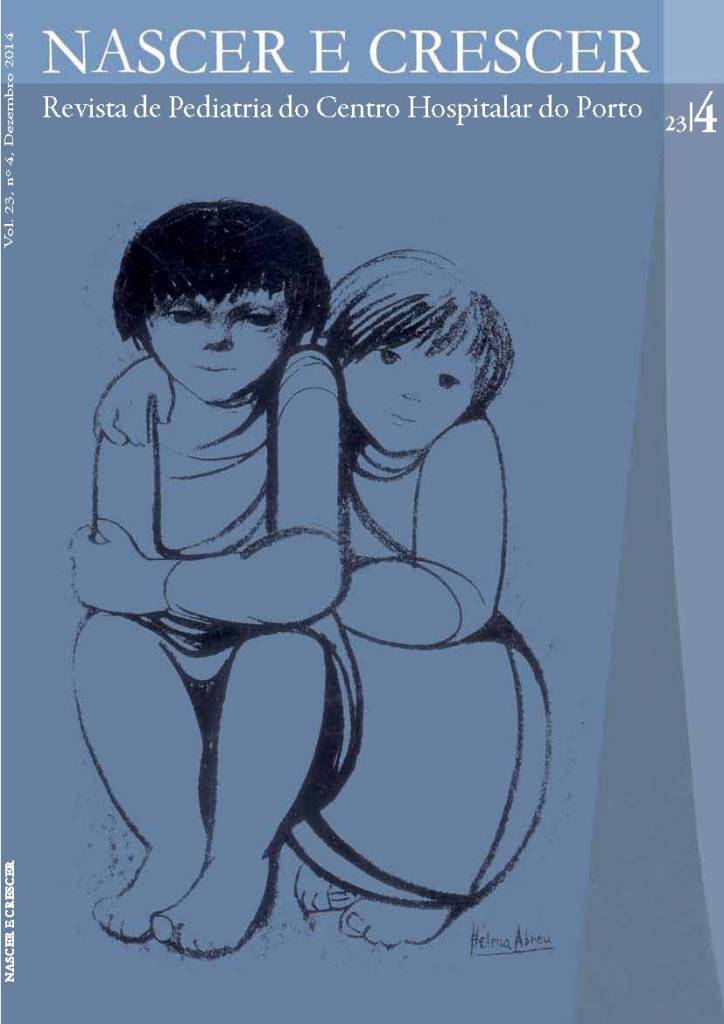Twin twin transfusion and fetomaternal transfusion
DOI:
https://doi.org/10.25753/BirthGrowthMJ.v23.i4.8788Keywords:
Chromosomopathy, twin twin transfusion, fetomaternal haemorrhage, intestinal atresiaAbstract
Introduction: The authors describe a case of fetomaternal haemorrhage (FMH) with signiÞ cant fetal repercussions, after laser ablation of vascular connections in the shared placentae in a twin twin transfusion syndrome (TTTS).
Clinical case: 31 years old, healthy, first gestation, spontaneous, monochorionic diamniotic twin pregnancy.The 1st trimester ultrasound at 12 weeks gestation showed concordance of crown rump length (CRL) values, but discordance of the nuchal translucency (NT) measurements. The first trimester screening for trisomies 21, 18 and 13 by ultrasound and biochemical testing, was negative.
A TTTS was diagnosed at 16 weeks - stage II / III of Quintero. Amniocentesis revealed a normal male karyotype 46, XY of the donor fetus and a chromossomopathy 47, XYY of the receptor fetus.
At 17 weeks, laser ablation of placenta vascular anastomosis was performed, occurring the death of the donor fetus at 18 weeks.
At 22 weeks, fetal anemia by fetomaternal transfusion (FMT), confirmed by ß ow cytometry, was diagnosed.
By 26 weeks, a dilated bowel loop was noticed - suspicion of intestinal atresia.
Birth by cesarean at 37 weeks. New born: male, 2660g, Apgar index 5/8/10. Ileal atresia type II was conÞ rmed and segmental bowel resection was performed. Favourable posterior outcome.
Conclusion: This is a case of twin-twin transfusion syndrome, followed by fetomaternal transfusion with intestinal atresia, in probable association with fetal anaemia in a fetus with a chromosomopathy.
Downloads
References
Sueters M, Oepkes D. Diagnosis of twin-to-twin transfusion syndrome, selective fetal growth restriction, twin anaemiapolycythaemia sequence, and twin reversed arterial perfusion sequence. Best Pract Res Clin Obstet Gynaecol 2014; 28:215-26.
Kenneth J, Moise Jr MD, Anthony Johnson DO. Pathogenesis and diagnosis of twin-twin transfusion syndrome. UpToDate, Dezembro 2012.
Quintero RA, Morales WJ, Allen MH, Bornick PW, Johnson PK, Kruger M. Staging of twin- twin transfusion syndrome. J Perinatol 1999;19:550-5.
Society for Maternal-Fetal Medicine, Simpson LL. Twin-twin transfusion syndrome. Am J Obstet Gynecol 2013; 208:3-18.
Kenneth J, Moise Jr MD, Anthony Johnson DO. Management of twin-twin transfusion syndrome. UpToDate, Fevereiro 2013.
Roberts D, Gates S, Kilby M, Neilson JP. Interventions for twin-twin transfusion syndrome: a Cochrane review. Ultrasound Obstet Gynecol 2008;31:701-11.
Sebring ES, Polesky HF. Fetomaternal hemorrhage: incidence, risk factors, time of occurrence, and clinical effects. Transfusion 1990; 30:344-57.
Kenneth J Moise Jr MD, Diagnosis ans managment of massive fetomaternal hemorrhage. UpToDate, Junho 2013.
Meleti D, Oliveira LG, Araújo-Júnior E, Caetano AC, Boute T, Nardozza LM, et al. Evaluation of passage of fetal erythrocytes into maternal circulation after invasive obstetric procedures. J Obstet Gynaecol Res 2013; 39:1374-82. doi: 10.1111/jog.12073
Lopriore E, Oepkes D, Walther FJ. Neonatal morbidity in twin–twin transfusion syndrome. Elsevier 2011-09-01Z, Vol 87, Issue 9, pp. 595-9.
47,XYY syndrome. Genetics Home Reference. January 2009. Disponível em: http://ghr.nlm.nih.gov/condition/47xyysyndrome
Downloads
Published
How to Cite
Issue
Section
License
Copyright and access
This journal offers immediate free access to its content, following the principle that providing free scientific knowledge to the public provides greater global democratization of knowledge.
The works are licensed under a Creative Commons Attribution Non-commercial 4.0 International license.
Nascer e Crescer – Birth and Growth Medical Journal do not charge any submission or processing fee to the articles submitted.


